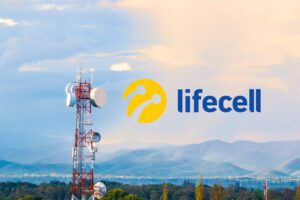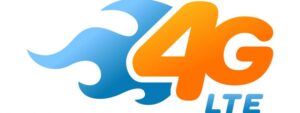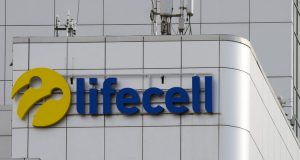
In September, the mobile operator lifecell connected 377 more settlements to 4G, where a total of 134,000 people live.
According to the company’s press service on Monday, out of the indicated number of settlements in 376 settlements up to 5,000 people live and in one – up to 25,000 people.
The operator also notes that as of the end of September, the operator’s 4G coverage is available in 12,889 settlements, where more than 28 million Ukrainians live.
With the network roll-out, the consumption of mobile Internet has also increased: last month lifecell subscribers used 56% more 4G traffic on an annual basis.
In September, lifecell users spent 11% more time on social networks, 31% more watched videos on YouTube and 42% more often communicated in instant messengers, compared to the same period in 2020.
At the same time, Ukrainians did not cut their calls to each other: the amount of voice traffic in lifecell network grew by 6% on an annual basis.
In Ukraine, lifecell is the third largest mobile operator.

In March 2021, mobile operator lifecell expanded its 4G network coverage in 661 more settlements of Ukraine with a population of more than 358,000 people.
According to the operator’s statement on Wednesday, in particular, in March the lifecell network was expanded in 655 towns with a population of up to 5,000 people and in six cities with a population of up to 25,000 people in different regions of Ukraine.
The operator also analyzed the consumption of data traffic in March: lifecell subscribers using 4G consumed 82% more mobile Internet traffic compared to the same period in 2020.
At the same time, the total volume of used data traffic in the operator’s network in March increased by 49% on an annual basis.
“One of the main reasons for the traffic growth is the expansion of coverage in the 900 MHz range, which became possible after the operators carried out refarming of the radio frequency spectrum in this range. This made it possible for residents of rural areas and small towns to use high-speed mobile Internet,” lifecell said.
Kyiv became the leader among settlements in terms of consumption of mobile Internet traffic in March in the category of cities with a population of more than 1 million, and then it is followed by Odesa, Kharkiv and Dnipro.
In cities with a population of up to 1 million people, Lviv is in the lead, and with a population of up to 500,000 people – Cherkasy.
The number of voice calls did not change compared to March 2020.

The mobile operator lifecell in May launched 4G mobile communications in 343 settlements in all regions of Ukraine.
According to the operator’s statement, in general, as of the end of May, 10,911 settlements were connected to the lifecell 4G network, where a total of more than 27.9 million people live.
In May, the lifecell network was expanded in 343 settlements, where 196,000 Ukrainians live. Of these, 339 with a population of up to 5,000 people, and four with up to 25,000 people.
“With the deployment of the network, the consumption of data traffic has also grown. Thus, lifecell subscribers who use 4G consumed 81% more mobile Internet traffic in May, compared to the same period in 2020,” the operator said.
As of the end of May 2021, the leaders in the use of lifecell mobile Internet were:
– up to 5,000 people – Baturyn (Chernihiv region);
– up to 25,000 people – Zdolbuniv (Rivne region);
– up to 50,000 people – Fastiv (Kyiv region);
– up to 100,000 people – Uman (Cherkasy region);
– up to 500,000 people – Vinnytsia;
– up to 1 million people – Zaporizhia.
In the category of cities with a population of more than 1 million people, the first place is occupied by Kyiv, followed by Odesa and Kharkiv.

The mobile operator lifecell in April expanded the coverage of high-speed mobile Internet of 4G standard in 674 settlements in all regions of Ukraine.
According to the operator’s report, in general, as of the end of April, 10,745 settlements were connected to the 4G network by lifecell, where a total of more than 27.7 million people live.
In April, lifecell network was expanded in 674 settlements, of which 667 settlements with a population of up to 5,000 and seven settlements – up to 25,000 people.
“In April, the average use of data traffic per data subscriber was 12.4 GB. This figure increased by 22% compared to the same period in 2020. The 4G subscribers increased the average monthly use of mobile Internet by 20%, to 10.8 GB,” the operator said.
As of the end of April 2021, the leaders in the use of lifecell mobile Internet were:
– up to 5,000 people – Dryzhba (Yampil district, Sumy region), Baturyn (Chernihiv region) and Bibrka (Sambir district, Lviv region);
– up to 25,000 people – Koziatyn (Vinnytsia region), Kamianka (Cherkasy region) and Zdolbuniv (Rivne region);
– up to 50,000 people – Irpin, Vyshneve and Fastiv (Kyiv region);
– up to 100,000 people – Brovary (Kyiv region), Uman (Cherkasy region) and Boryspil (Kyiv region);
– up to 500,000 people – Chernihiv, Vinnytsia and Cherkasy;
– million-person cities – Kyiv, Odesa and Kharkiv.
At the same time, in April the volume of voice calls in the lifecell network increased slightly by 3% compared to April 2020.

In February, the mobile operator lifecell expanded the coverage of high-speed mobile Internet in another 1,078 settlements in all regions of Ukraine.
Last month the lifecell network was expanded in all regions of the country, in particular in 1,060 settlements with a population of up to 5,000 people, in 15 settlements with a population of up to 25,000 people and in three settlements, where up to 50,000 people live, the company said on Thursday.
Expansion of coverage will reduce the gap in access to digital services between small settlements and cities, lifecell notes.
According to the operator, customers using 4G from lifecell consumed 79% more mobile Internet traffic last month compared to the same period in 2020. At the same time, the total volume of used data traffic in the operator’s network in February increased by 43% on an annual basis.
In the category of cities with a population of more than 1 million people, the capital traditionally takes the first place, followed by Odesa and Kharkiv.

Ookla (the United States), the developer of Speedtest service, has recognized Vodafone Ukraine as the mobile network operator with the highest average mobile Internet speed in Ukraine in July-December 2020.
Such data were released during an online conference on Thursday.
“Now we have already recorded almost 5 million Ukrainians who have tested Internet services on this platform. This is an extraordinary figure in scale. Today we are here to welcome the fastest mobile Internet in Ukraine – Vodafone Ukraine,” the sales director at Ookla said during the conference.
According to him, in Q3-Q4 2020, Vodafone Ukraine reached the Speed Score of 30.85 (in 2019 it was 17.93). The average download speed was 29.38 Mbps, upload – 14.1 Mbps (in 2019 it was 19.37 Mbps and 11.16 Mbps, respectively).
He also said that in 2020, Ukraine climbed one position in the global ranking in terms of Internet connection speed, being 86th.
Ookla is a leader in fixed and mobile internet speed testing and analysis. According to the company, users run more than 10 million tests on the application every day.